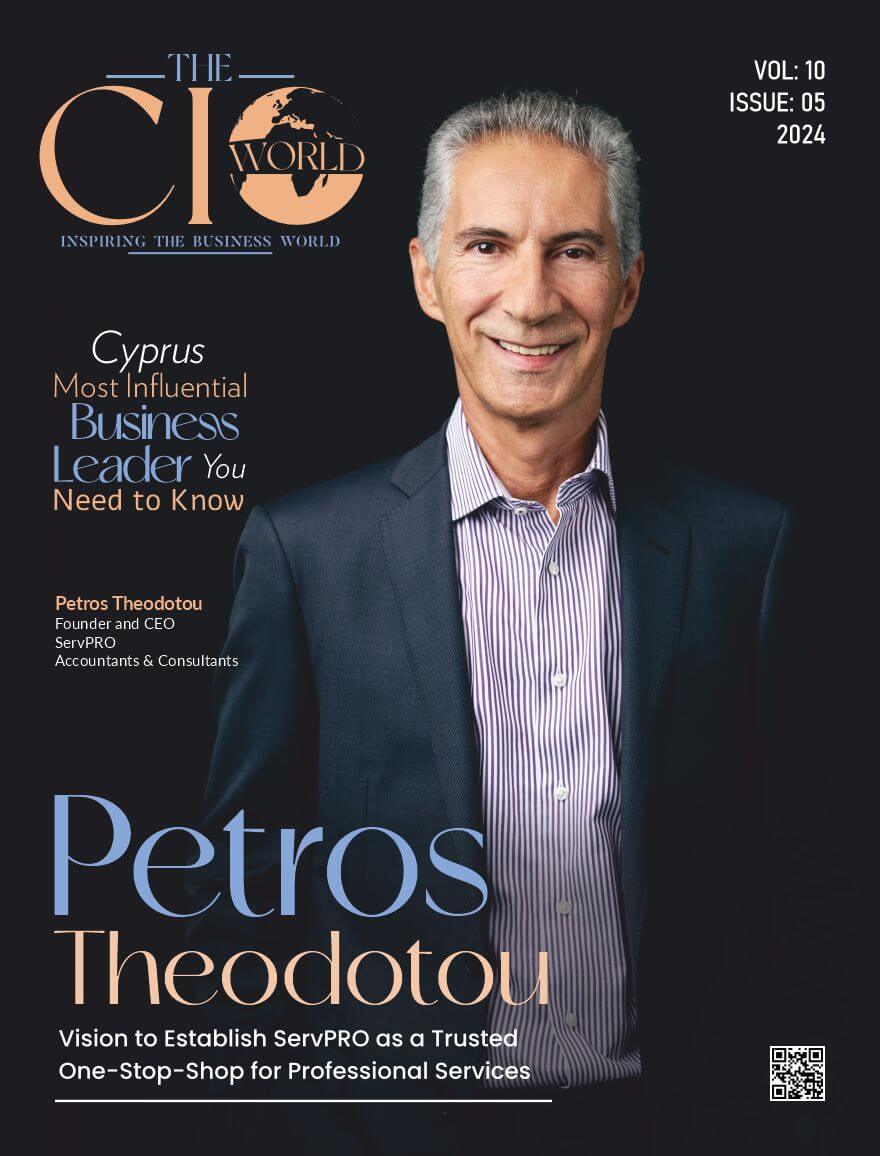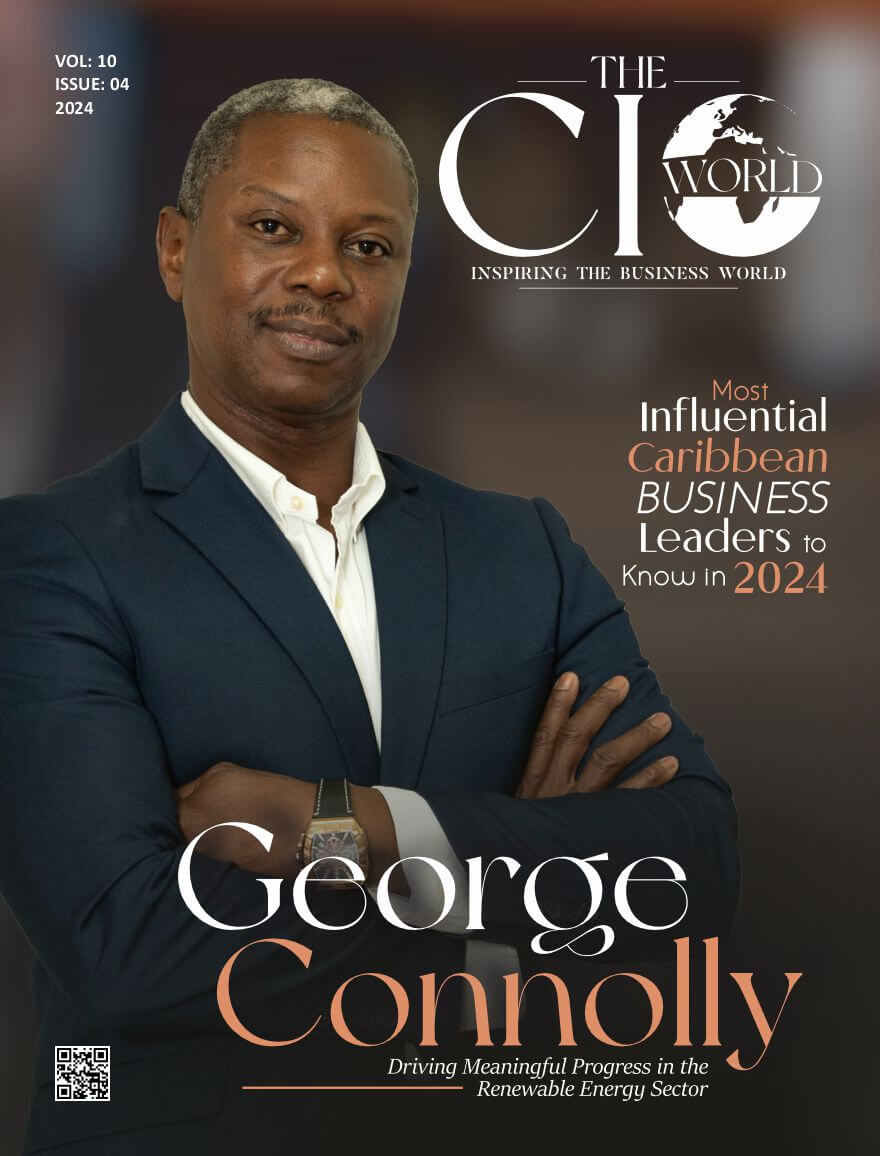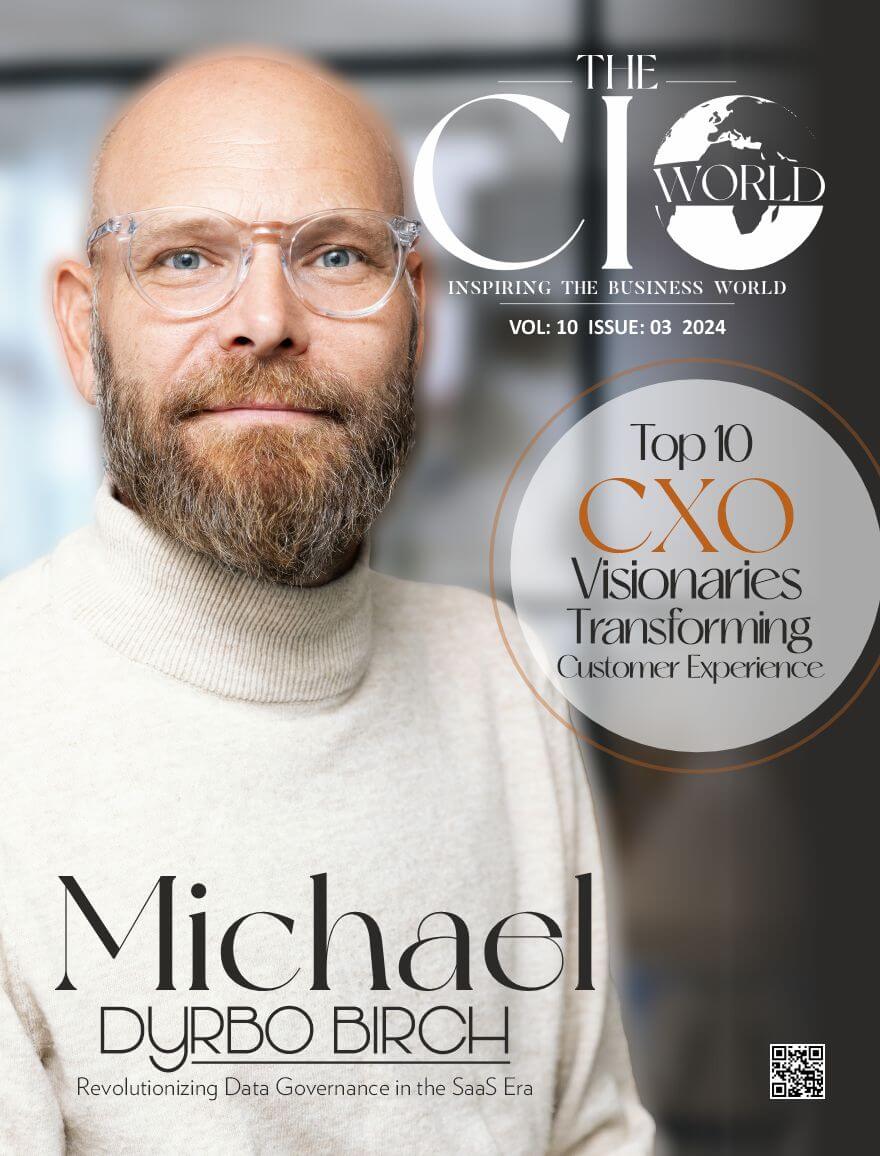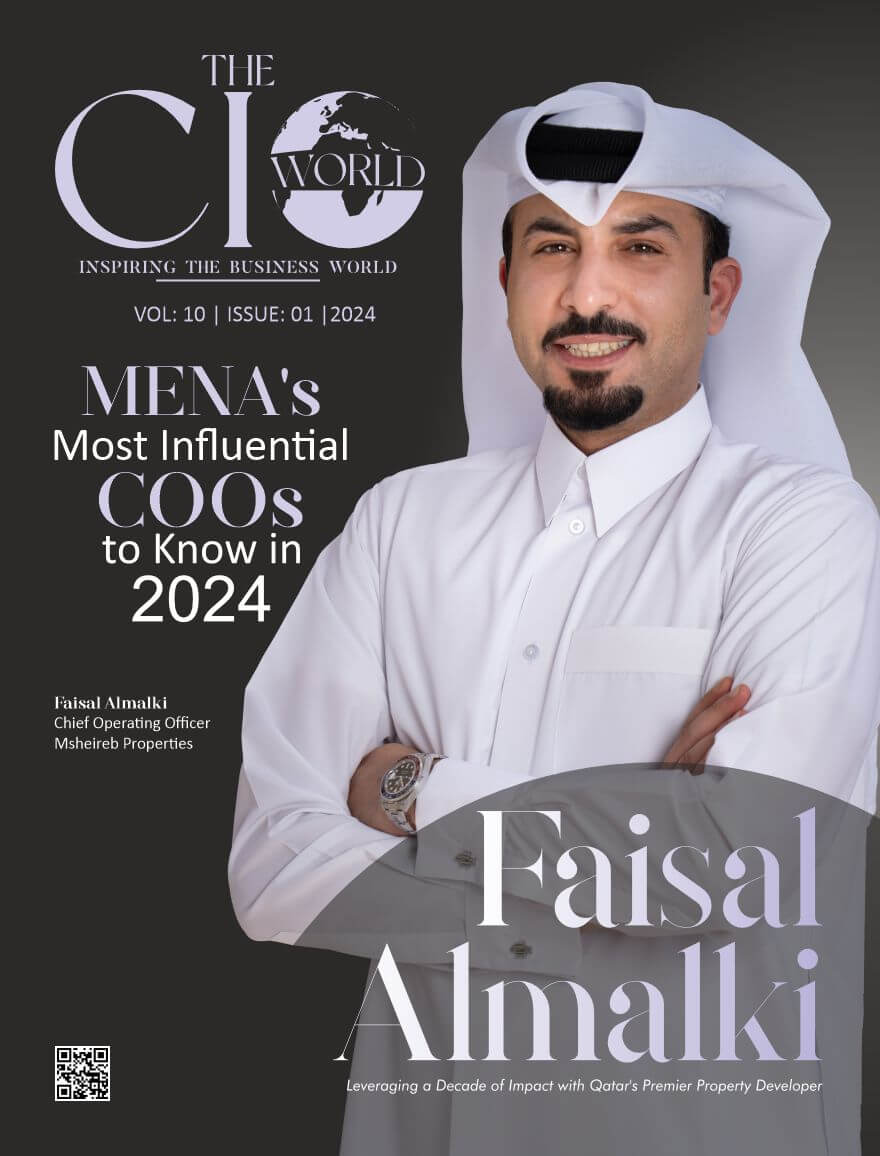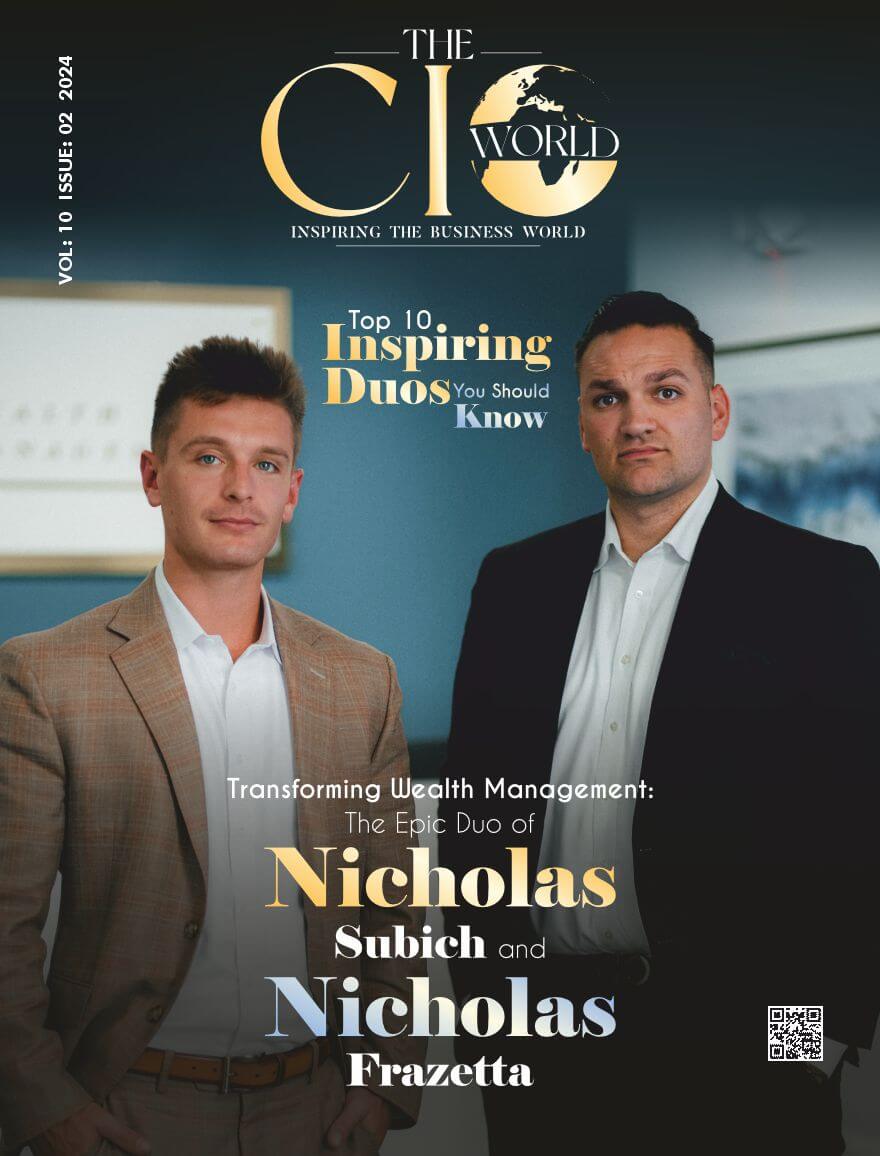A Journey through the Ever-Evolving Technology Sector, from Software Developer to Innovation Enthusiast!
Change is the only constant in life, a truth that resonates profoundly in every aspect of our existence. From personal growth to professional development, the essence of progress lies in our ability to embrace change. Human nature is inherently driven by a desire to improve and become better versions of ourselves. Whether it’s learning a new skill, adopting a healthier lifestyle, or refining our perspectives, improvement is a journey of continuous evolution. It is a recognition that our current state, no matter how accomplished it is, is merely a stepping stone to something greater.
In this compelling landscape of perpetual change, we encounter individuals like Jason Peisl, a passionate CTO whose zeal for innovation is rooted in the ever-shifting nature of technology. He embarked on his professional journey as a software developer and swiftly ascended through the ranks, gaining invaluable insights into designing and building solutions. His journey, which has included leading large teams to achieve organizational goals through IT enablement, demonstrates his commitment to mastering the complexities of the tech landscape.
The challenge of staying at the forefront of technological advancements has been a driving force for Jason. In an era where speed defines success, his role as CTO is not just about keeping pace; it’s about leading the charge. The dynamism of the technology sector fuels his motivation to utilize cutting-edge innovations to drive Ackermans’ success in an ever-changing market.
For him, technology isn’t just about code and algorithms; it’s a catalyst for meaningful change. Passionate about innovation, he has found a home at Ackermans, a company that not only embraces but also encourages groundbreaking ideas. His vision extends beyond traditional IT enablement; it’s about transforming organizations, improving efficiency, and enhancing the quality of products and services through the power of technology.
The dynamism of the technology sector provides Jason with a platform for continuous learning and personal growth. In an environment where new paradigms and tools emerge regularly, he sees not just challenges but opportunities. The need to adapt and develop new skills is constant, presenting not only a chance for professional development but also an opportunity to mentor the next generation of tech talent.
Jason’s story beautifully aligns with the profound truth that, in the face of change, lies the opportunity for growth and the pursuit of something even more extraordinary. Let us explore his journey!
A Legacy of Excellence: Ackermans Through the Years
In recounting Ackermans’ remarkable history, Jason shares that the retail giant was founded 107 years ago by Gus Ackerman in 1916. Today, Ackermans has expanded its footprint to encompass five countries (BLNS), boasting over 1,000 stores and a dedicated team of 13,000+ employees. The vision for Ackermans is ambitious—to emerge as the premier value retailer for women with kids in their lives. This vision is grounded in providing customers with unparalleled value for their money, offering quality products at unbeatable prices, and maintaining an unrelenting commitment to excellence.
Dynamic Landscape of Retail Technology
In discussing the current state of retail technology, Jason expresses enthusiasm, stating, “Retail technology is an exciting space to be involved in at the moment.” Acknowledging the momentum behind cloud computing, AI, digitization, and blockchain, he emphasizes the necessity for retailers to grasp their impact on platform operations, technological skill evolution, customer interactions, and the future of payments.
In this era of rapid technological transformation, Jason positions enterprise architecture as the crucial link facilitating the seamless integration of innovations with existing legacy systems. Recognizing the multitude of technical skills required for retailers to navigate this evolving landscape, he, drawing from his experience as the head of customer applications, enterprise architecture, and innovation at a major African grocery retailer, underscores the significance of enterprise architecture in ensuring relevance and agility. This role, as he highlights, has provided him with opportunities to explore and experiment with cutting-edge retail technology, resulting in several global firsts.
The Strategic Alignment
In emphasizing the significance of aligning technology roadmaps with strategic business objectives, Jason underscores the critical role it plays in driving overall organizational success.
To achieve this alignment, CIOs are tasked with gaining a profound understanding of the company’s strategic goals. Collaborating closely with the executive team and department heads, CIOs identify specific technology requirements and innovations essential to supporting these objectives.
This, however, goes beyond being viewed as mere enablers. CIOs and their teams must also be equipped to lead business decision-making, positioning themselves as thought leaders and trusted partners in the business.
Jason further articulates that once these objectives are clear, the CIO can craft a technology roadmap prioritizing projects, investments, and upgrades that complement and enhance the business strategy. This roadmap, designed to be flexible, adapts to evolving business needs and technological advancements.
Effective communication and collaboration with other departments and IT teams become essential to ensuring everyone works toward shared goals. Regular assessment and measurement of the impact of technology initiatives on the organization’s strategic success are also crucial. In conclusion, the successful alignment of technology roadmaps with business objectives empowers the organization to harness technology as a potent tool for gaining a competitive advantage, improving operational efficiency, and meeting the dynamic demands of customers.
Steering Organizational Triumph through Technology
In reflecting on his vast experience, Jason, a seasoned professional, shares how his role in managing enterprise management solutions and leading teams has played a pivotal role in steering organizational success.
His leadership prowess manifests in orchestrating the implementation and optimization of enterprise management systems. This involves ensuring seamless integration with existing processes and aligning them with business objectives. Jason adeptly manages project timelines, budgets, and resources, maintaining an unwavering focus on delivering measurable results.
A defining attribute of Jason’s leadership lies in his ability to lead and motivate teams. Charged with assembling, mentoring, and empowering high-performing teams, Jason’s guidance not only fosters technical excellence but also promotes effective collaboration. This collaborative spirit enables teams to adapt seamlessly to evolving industry standards and emerging technologies.
“My experience in managing enterprise management solutions and leading teams showcases my expertise in orchestrating the technology backbone of an organization, ultimately contributing to its growth, innovation, and operational excellence,” highlights Jason.
A Glimpse into Ackermans’ Approach
In discussions about the strategies he employs to drive efficiency and implement best practices in his role, Jason emphasizes the vital role of these initiatives in ensuring the success of Ackermans. The organization places a strong emphasis on aligning IT strategy and solution selection with overarching business objectives, with active involvement from business stakeholders throughout the selection and evaluation processes.
Within Ackermans, a commitment to being a data-driven decision-making organization propels a culture of curiosity and continuous questioning. He underscores the importance of monitoring key performance indicators, identifying areas for improvement, and fostering a climate where directional changes are not only accepted but actively sought.
The organization regularly evaluates existing business processes, aiming to identify and address inefficiencies and redundancies. Initiatives such as streamlining workflows and automating repetitive tasks are underway, including a dedicated robotic process automation project. This project targets repetitive tasks, enhancing operational efficiency by leveraging technology for faster and more accurate execution.
Prioritizing cybersecurity remains a top agenda item for Ackermans. Robust security measures and ongoing employee cybersecurity education are deemed essential to protect sensitive data and ensure business continuity in an ever-evolving digital landscape. In the pursuit of operational excellence, Ackermans strives for technology standardization and simplification. This continual effort not only reduces complexity within the IT environment but also promises cost savings, increased agility, and improved overall performance. These strategic implementations across departments align with best practices, contributing significantly to its overarching success.
Innovation Outlook
Jason underscores the ever-changing and competitive nature of South Africa’s retail landscape. Customers, both tech-savvy and financially conscious, pose evolving challenges. To capture market share, retailers must grasp customer needs and exhibit agility. Jason emphasizes the growing role of tech innovation in understanding and optimizing customer interactions.
Smartphone penetration, set to reach 80% by 2025, amplifies the importance of leveraging innovations like mobile payments, chat commerce, and loyalty programs. With heightened competition and financially constrained customers, retailers explore income generation beyond their core business.
Innovative technologies such as augmented reality and personalized recommendation engines enhance shopping experiences, fostering loyalty. The application of big data and analytics provides valuable insights, driving targeted marketing, efficient inventory planning, and informed operational decisions. Ackermans focuses on inventory management, supply chain optimization, and real-time analytics for enhanced efficiency and reduced costs.
Staying ahead requires a curious mindset. Ackermans cultivates a culture of learning and innovation, embracing emerging technologies through dedicated teams and labs. He concludes that, in a rapidly evolving industry, embracing innovation is paramount for sustained competitiveness.
Strategic Approach to Staying Ahead
In Jason’s role as a CIO, staying abreast of technology and retail trends is not just a necessity but a commitment to driving innovation and informed decision-making in a swiftly evolving landscape. He dedicates time to continuous education through active participation in conferences, webinars, and workshops focused on technology and retail. Subscribing to industry-specific publications provides valuable insights into emerging trends, case studies, and expert opinions.
Building a robust professional network is a cornerstone of his strategy, involving connections with peers, attendance at networking events, and active participation in online forums. These efforts yield valuable perspectives on both retail and technology trends, fostering a comprehensive understanding of the ever-changing industry landscape.
At Ackermans, Jason leverages an extensive network of technical vendors and suppliers, collaborating on proof-of-concept initiatives to explore how emerging trends can benefit retail operations. This proactive approach ensures that Ackermans remains at the forefront of technological innovation in the retail sector.
Furthermore, within the broader Pepkor group, regular collaboration sessions bring together CIOs from different retailers, fostering discussions on potential technology synergies. This collective sharing of insights enhances the group’s collective technological vision and positions him as a key player in shaping the technological future of the retail conglomerate.
Critical Competencies for an Enterprise Architect
In outlining the essential skills for an enterprise architect, Jason emphasizes a diverse skill set crucial for success in this multifaceted role. “First and foremost, they must possess a deep technical acumen, enabling them to navigate a rapidly evolving technology landscape. Their ability to bridge the gap between IT and business is equally crucial, translating complex technical concepts into tangible benefits for the organization. Effective communication, both verbal and written, is essential as enterprise architects collaborate with stakeholders from diverse backgrounds. These professionals are strategic thinkers capable of aligning IT solutions with the long-term vision and goals of the enterprise. Strong problem-solving skills are pivotal as architects dissect complex issues into manageable components to devise comprehensive solutions. Leadership abilities come into play when guiding cross-functional teams through intricate projects. Moreover, an enterprise architect must be adaptable, staying attuned to emerging technologies and cybersecurity trends while possessing robust risk management skills. These competencies collectively empower architects to architect the future of their organization’s IT landscape,” he highlights.


